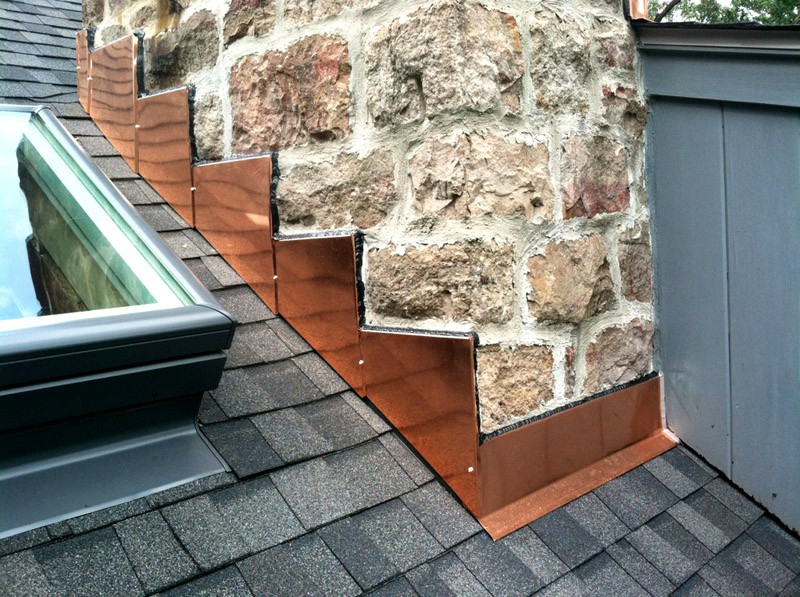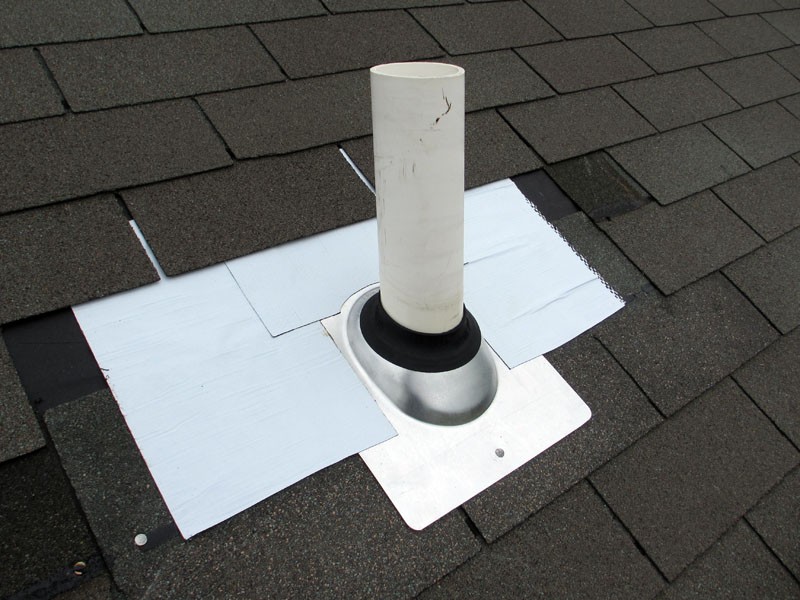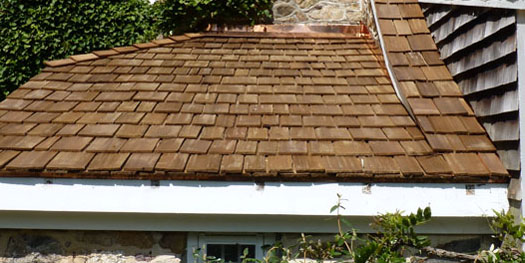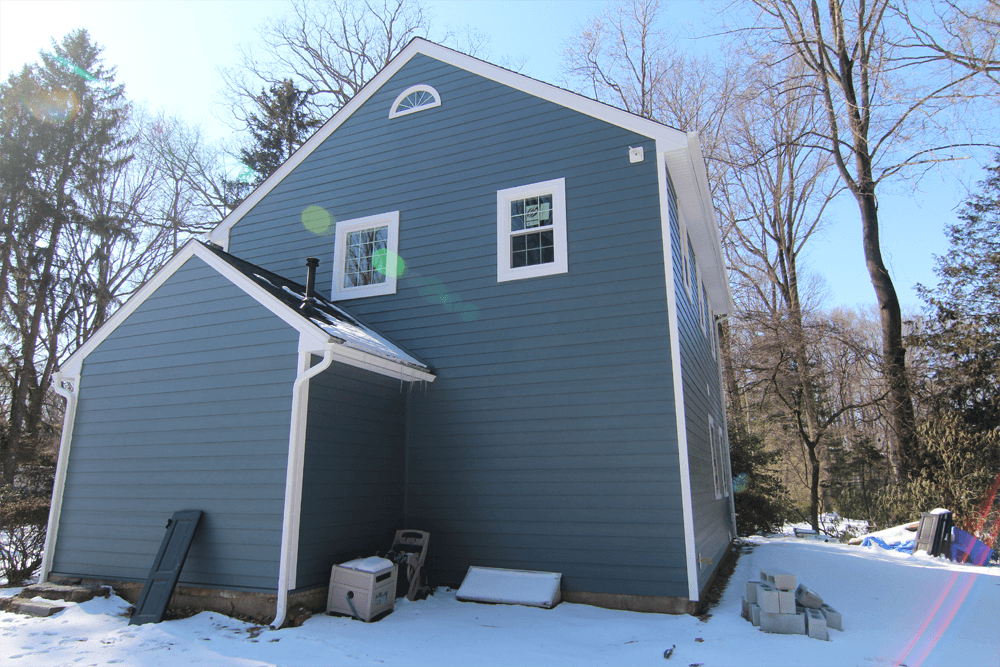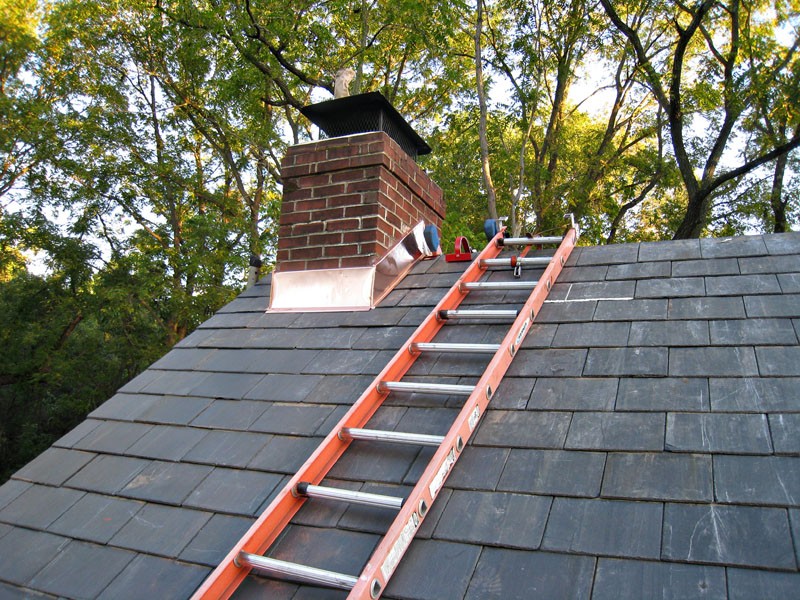After over 25 years of experience installing all types of roofing systems, we can safely say that while roofs can be installed at any time of the year, it’s best to replace your roof in the fall.
The advantages of fall installation are obvious; the weather is still nice, but not oppressively hot. Your local roofer can work long hours on your roof completing the replacement in often just one day, all without risking heat exhaustion. Additionally, all materials will be installed under perfect weather conditions, ensuring a better quality of installation & improving your new roof’s longevity.
We’ll go into specifics below, but, simply put, if you’re considering installing a new roof, fall is the prime time to re-roof your home.

Why Replace Your Roof in the Fall?
To understand why it’s best to handle re-roofing in the fall, it’s necessary to consider some of the technical aspects of roof replacement. When new shingles are installed, they need some time to seal and create an airtight barrier that will stand up to even the harshest weather. By replacing your roof in the fall, the shingles will have plenty of time to form that barrier prior to the winter season’s first snowfall.
If it’s clear that your roof needs replacing, it’s a mistake to try to get it through another winter and tackle the project come spring. Even if the problems are relatively minor, like a few small holes or minor leaks here and there, winter can magnify them to a whole new level. A major snowfall can create nightmares for homeowners with faulty roofs since the added weight of the snow can cause further structural problems and trigger leaks and other moisture-related problems, such as ice dams, if the temperature rises above the freezing mark long enough for the snow to melt.
Unsure Whether Your Roof Can Withstand Another Winter?
In case you’re not sure whether or not your roof will make it through the coming winter, you should consider having a local contractor check your roof to evaluate its integrity.
Not all roofing problems are obvious, and the absence of drafts or leaks doesn’t necessarily mean your roof is structurally sound. And if the inspector recommends a roofing replacement over repairs, now is the time to act!
A thorough roofing inspection should include:
- checking for any interior signs of leaks
- checking for broken, cracked, curled, or missing shingles, and any signs of a loss of granulation
- assessing the condition of exhaust pipes, valleys, outer edges or angles where the roof meets the walls
- checking flashings for damage, corrosion, or holes
- inspecting loose gutters or gutters pulled away from the structure
- checking your attic insulation levels
For a roofing inspection checklist, read: Roofing Inspection 101: Contractor’s 3-Step Checklist.
Only Hire Reputable Roofing Replacement Contractors
Installing a new roof is a serious undertaking and one that very few homeowners will (or should!) tackle themselves. Because of the critical role your roof plays in protecting your home, this is a job that’s best left to your local roofing contractor experienced with the ins and outs of the roofing replacement process.
If you’ve never gone through the re-roofing process, it may seem a bit overwhelming and you may not know where to start. For tips, check out Homeowner’s Guide To Shingle Roofing Installation.
Need Your Roofing Repalced?
All Roofing Solutions is a family-owned and operated roofing contractor that proudly serves Delaware and southeastern Pennsylvania. We have been replacing, repairing, and inspecting roofs in the residential and commercial sectors for nearly 20 years and pride ourselves on excellent workmanship and great customer service!
To schedule your free consultation, call 302-725-ROOF (7663) in Delaware or 610-551-ROOF (7663) in Pennsylvania. And don’t forget to ask about our discounts!
Why Choose All Roofing Solutions
 Family-owned and operated Delaware & Pennsylvania roofing contractor.
Family-owned and operated Delaware & Pennsylvania roofing contractor.- Fully licensed and insured.
- Over 20 years of experience with roofing & siding installation and repair.
- A+ rated BBB member
- Complimentary Extended Material warranty
- 30-year workmanship guarantee on full roof replacements
- Lien Waiver to protect the homeowners from material liens
- Own crew—no subcontractors!
- Full-service roofer handling all types of residential and commercial roofing, windows & siding projects.
- Most re-roofing projects are completed in one day.
- Because we are efficient we are able to offer very competitive prices compared to large contractors with bigger overhead.
- Each roofing/siding projects includes a meticulously performed, post-roofing inspection. We want to make sure that your roof replacement is done correctly and that it meets your complete satisfaction.
- The company owner supervises all projects to ensure high-quality workmanship.
- Customer Satisfaction Guaranteed!
